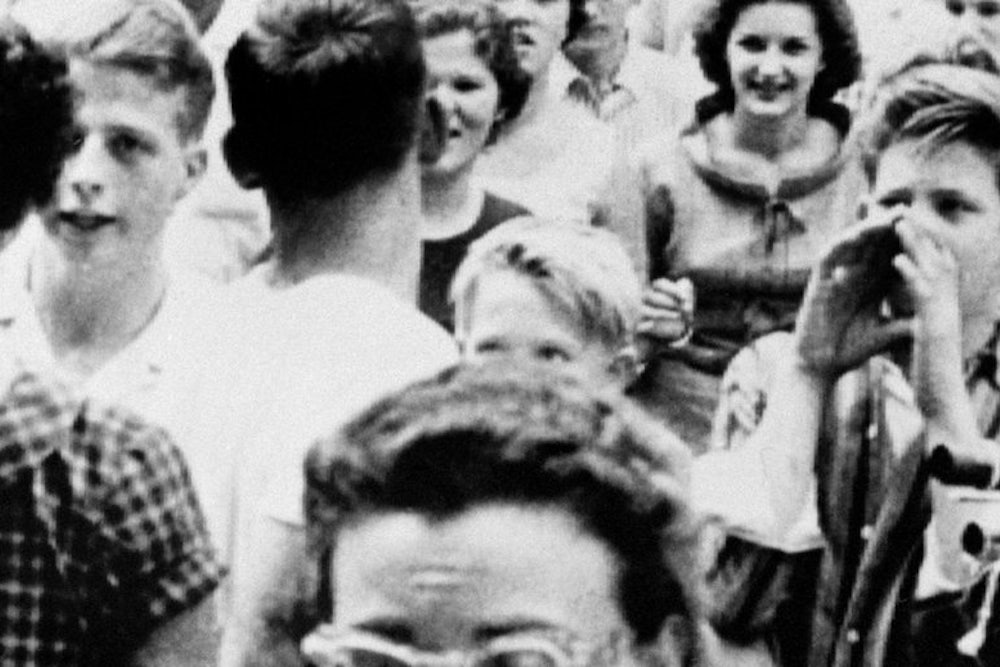I grew up in rural, red Oklahoma, where the biggest industries are oil, ag, meth, and the Southern Baptist Church. Although the church finally voted to renounce its past support for slavery in 1995, the year I left for college, it's fair to say that the locals have not been so quick to embrace affirmative action. I understand why. Neither my classmates nor I had ever been to South Central L.A. or the South Side of Chicago, but we had all seen “The Cosby Show.” We resented a system that seemed to extend a helping hand to such people, in their beautiful brick houses, while we remained the butts of every joke about trailer houses and tornadoes.
I later realized I had the test scores to go to college nearly anywhere in the country, but at the time I applied to only three schools, all within two hours of home: Oklahoma State, the University of Oklahoma, and Oral Roberts, which I considered an elite institution, largely because the students were forced to wear ties.
In short, I was in the same position as the lower-income students that Caroline Hoxby and Christopher Avery described in a paper last month at the Brookings Institution. (The paper was also the subject of a buzzed-about New York Times article.) Most of these students never consider an elite college because they've never met anyone from such a place or because they think the cost would be prohibitive. Selective institutions also don't do much to change such perceptions, either, focusing their outreach in only 15 urban areas.
All this might change if the Supreme Court overturns race-based affirmative action. This spring the Court will deliver its verdict for Fisher v. University of Texas, a case that, according to The New York Times will determine if Texas “is allowed to use affirmative action.” Last week, the Court announced it would hear another case, Schuette v. Coalition to Defend Affirmative Action, to determine if a voter initiative that bans racial preferences in admissions to Michigan’s public universities violates the equal protection clause.
If these cases strike down race-based affirmative action, colleges and universities may be forced to broaden outreach efforts in a way that could be healthy for the educational system as a whole, introducing new forms of diversity to campuses where a multiracial student population can belie economic homogeneity. It might even reduce resentment among those whose primary experience of racial diversity comes from television. We've seen, for example, that people who know a gay couple are far more likely to support gay marriage than those who don't (call it the Rob Portman effect). Could the same apply to people who experience affirmative action in their own communities and families rather than as an abstract bogey? Elizabeth Aries's research implies that the comparison holds, as 62 percent of low-income white students who benefit from Amherst College's outreach programs also report a growing appreciation for racial diversity during their time on campus.
If outreach to a broader low-income population were the only response to the Supreme Court's decisions, however, we would risk replacing one illusion of diversity with another. Hoxby and Avery also found that 6 percent of high-achieving, low-income students were black, 8 percent were Latino, and 69 percent were white. We certainly should do a better job identifying and educating all students who show potential, no matter their race or geography, but a successful educational system must also do more than recognize talent and success. It should also take an active role in transforming a society that generates such racial inequalities in the first place—and one where black and Hispanic students, in particular, are far more likely than their peers to live below the poverty line.
One of the privileges of my own journey from Oklahoma State to Oxford to UC Berkeley, was to gain a longer historical perspective on the legal, material, and cultural forces that impact our ability to speak or act at any given moment. As we turn our attention to economic and educational inequalities, it would surely be committing a willful act of blindness to deny the entanglement of those inequalities with race in American history, or to imagine, as William Faulkner said, that the past is ever really past. To move beyond that past rather than reproduce it, we will need a more nimble and robust system of affirmative action, whatever the Court decides.
